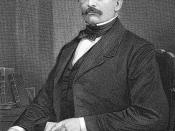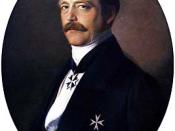Up until the Revolution of 1848, the real political significance was held by the individual states rather than the German Federation which as an organization was useless. Power was held by the revolutionaries throughout Germany, and in some places their control went beyond the limits of the city. In an effort to discuss unification and a possible future constitution, the German National Convent was formed and the elected officials met in Frankfurt, Paulskirche. The representatives came from the provinces in Germany but not excluding the provinces outside the borders of the German Federation which had been gained in the Polish partitions. This included the partitions gained by Schleswig and Prussia.
The new Assembly had to deal with the two main concerns. The first was the future constitution of a unified Germany and secondly, the possible unification in its entirety. During the initial assembly of the assembly, Germany's monarchies (Prussia, Austria) were unable to make any changes because their capitals were being ruled by revolutionaries.
The Parliament continued to formulate possible solutions for Germany's unification. It discussed implementing of the two following solutions: (1) The Larger German Solution (Austria under Prussian Leadership) and (2) A constitutional monarchy as the main objective and the position of German emperor was offered to Emperor Ferdinand of Austria and then to King Friedrich Wilhelm of Prussia, of whom both declined the offer.
To make matters more complicated the populations of the area was very diverse. While the German population was only a minority in the Prussian province of Posen, they demanded they be included and represented in Frankfurt and included in the unification plans of Germany. They ultimately succeeded in their efforts. The same issue was brought up in Schleswig-Holstein but no effort was made to prevent its acceptance into the plans for its population...


